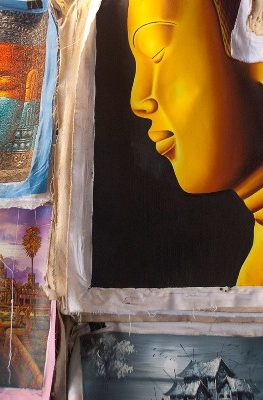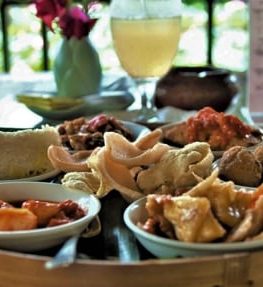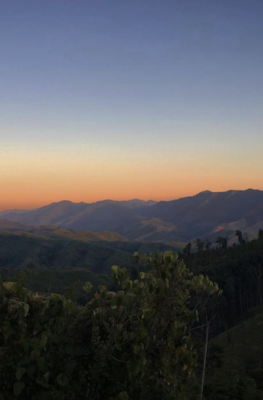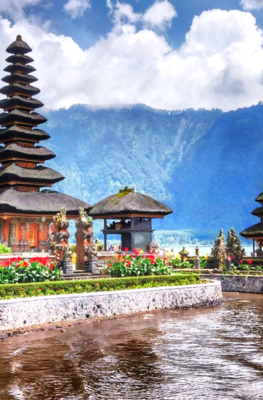Published on August 7, 2014
On the northwestern-most tip of the island of Papua, the magnificent Raja Ampat cluster of islands bask in the tropical sun surrounded by crystal clear seas that change colour from aquamarine to deep translucent blue. Here the currents from the Indian Ocean meet the powerful deep flows from the Pacific Ocean creating what scientists call “ a species factory”. Covering a total area of 40,000 square kilometers of land and sea, the archipelago comprises some 1,500 islands, the largest of which are Waigeo, Misool, Salawati and Batanta.
The strong currents fuunel nutrients to create an incredible underwater panorama of fringing coral reefs, blue-water beds, mangrove flats, and seagrass plains that are habitat to hundreds species of fish and ocean life. It is small wonder, therefore, that Raja Ampat is also known as “The Marine Kingdom like no other …”
For, Raja Ampat – literally translated meaning “The Four Kings” hosts over 1,000 species of coral reef fish, 5 species of endangered sea turtles, including the hawksbill turtle, 700 species of mollusks, including 7 species of the rare giant clams.
Also making their habitat here are 13 sea mammal species such as the dugong and the formidable endangered Manta rays.
If in many parts of the world mantas are hunted for their fins that are served as expensive delicacies or used for medicinal purposes, since February 2014, the Indonesian Government has issued a Decree (No. 4/KEPMEN/-kp/2014) that prohibits the catch and export of manta rays across the seas of the Indonesian archipelago, making the Indonesian seas the largest marine conservation area in the world for Manta Rays.
Indonesia boasts two manta species that make the Indonesian waters their playground, unlike elsewhere, where only one species of manta is found. These are the coral manta (manta alfredi) and the oceanic manta (manta birostris).
Mantas are endangered animals as specified by the International Union for the Conservation of Nature. Therefore, based on this consideration, mantas must be protected throughout the Indonesian seas and are prohibited for export to save these for future generations, stated Minister Sharif C. Sutardjo, Minister for Marine and Fisheries.
One particular area that has been set aside for the conservation of mantas are the Raja Ampat islands that are divided into 7 separate marine protected areas.
Today, a number of conservation groups are active on the islands. One of which is the Manta Trust under Project Manager Sarah Lewis, who is gathering data on Mantas in the area. Her project entails : population monitoring of both species, the Manta birostris and the Manta alfredi; and Investigating movements and migration patters of these two species.
One of the first results especially around “Manta Sandy” was the resighting of a pregnant female Manta. Sarah hopes to witness the livebirth of this manta, which will be the first ever recorded in the wild.
Mantas are charismatic and imposing sea creatures that are harmless, non venomous, and are friendly to humans, except that divers must watch out not to swim into the path of these giant animals, whose wings span some 7 meters from end to end. Mantas must be protected since they are known to breed very slowly. A manta reaches sexual age at 8 to 10 years. The time of gestation is between 2 – 5 years for a manta to produce 1 young only. Since a manta can reach 40 years of age, during its lifespan it can produce only between 6 to 8 babies.
In Indonesia huge manta rays in groups can be easily sighted by divers in the waters of Raja Ampat in West Papua, Wakatobi islands in South East Sulawesi, the Komodo National Park in East Nusatenggara, the Savu Sea in the Moluccas, and south of Bali near the Nusa Penida island.
For more information on conservation projects in Raja Ampat, log on to: http://www.stichting-rarcc.org/projects/research-projects/
Related Links
RAJA AMPAT
WONDERFUL WAIGEO ISLAND OF RAJA AMPAT
UM ISLAND, RAJA AMPAT
WAYAG ISLAND, RAJA AMPAT
KOFIAU ISLAND IN RAJA AMPAT – RARELY VISITED CORNER OF A DIVER’S PARADISE
PULAU MISOOL
ARBOREK TOURISM VILLAGE, RAJA AMPAT
SAUWANDAREK TOURISM VILLAGE
THE SAVU SEA NATIONAL MARINE PARK: MAIN CORRIDOR FOR MIGRATING WHALES, DOLPHINS, AND MANTAS
PULAU MARATUA: DIVE WITH GREEN TURTLES AND MANTA RAYS IN EAST KALIMANTAN






